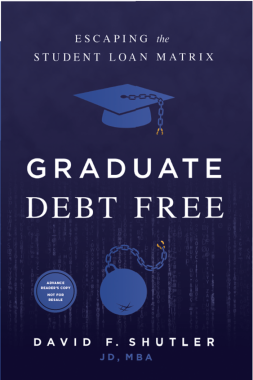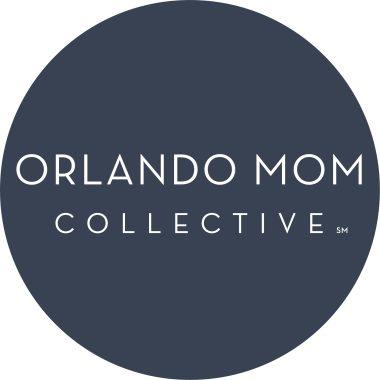College application season’s coming up, and with it, the looming question: how am I going to finance my education?
To most, the answer lies in some combination of savings, financial aid, and most significantly, debt. Yet far too often, families dive headlong into debt.
As of September 30, 2022, the federal student loan balance was $1.6345 trillion, with some 43.5 million borrowers owing an average of $37,575 in federal debt. When combined with private student loan debt, the outstanding balance rose to $1.768 trillion. Those figures represent a sobering number of college students who are struggling to pay off burdensome student loans — a fact that holds grave implications for their future.
Moreover, we refer to this as a “student” loan problem, but sadly, it’s not just students who are caught in this net. Parents are often trapped in a similar financial bind. After assisting with their children’s education, roughly 10 percent of undergraduate parents now face the burden of their own onerous loans, with recent estimates indicating Parent PLUS loans exceed an average of $30,000. According to the Federal Reserve Board’s Survey of Consumer Finances (SCF), which measures household debt, the average household education loan debt was $40,549.84 in 2019, and it was held by 21.4% of households. That’s a lot of folks owing a whole lot of money.
How have we gotten here?
One important reason that is often overlooked in the conversation about financing higher education is that families and students have been conditioned by a number of flawed assumptions that often shape their decision-making processes. Collectively, I call these assumptions the Student Loan Matrix, and discuss them in my new book Graduate Debt Free.
The good news is, neither parents nor students HAVE to go into debt to finance a college education. There are numerous alternative ways to finance college that most families aren’t aware of, or don’t consider, and that can significantly reduce–or eliminate–student debt.
So before you sign off on that loan, make sure you have fully considered the alternatives, including the top four loan-free ways to finance college:
Education “à la Carte”
Many fast-food franchises offer competitive pay, flexible hours and, most importantly, college scholarships. One advantage to this route is that it offers money towards college while also gaining seniority in one’s job. McDonald’s, Taco Bell, Chipotle, In-N-Out, Chick-fil-A, Starbucks and Papa John’s are just a few of the fast-food restaurants that offer various amounts of scholarship money to their qualifying employees. Some offer as much as $5,250 per year towards college costs.
Big Box Business Scholarships
If you’re not fundamentally a fan of fast-food franchises serving fried foods for many hours each week, consider getting a job at a big-box business with scholarship opportunities available to part-time and full-time employees instead. Companies such as Walmart and Target offer scholarship opportunities for part-time and full-time employees. Industrious students can fund their educational journey and begin earning valuable work experience by investing their time at these companies for a few years early on.
Other Employer-Provided Education Assistance Benefits
Provided under IRS Code Section 127, some level of tuition reimbursement is also offered by a plethora of other employers, from restaurants and grocery stores to gas companies, banks, and airlines. These programs are often less generous than those focused on scholarships, but can be a valuable resource nonetheless.
A useful Hip2Save website article lists over 40 companies ranging from restaurants and grocery
stores to gas companies, banks, and airlines that all offer their employees some level of tuition reimbursement.42 At job interviews, a forward-looking student might inquire if their prospective employer offers any Section 127 benefits. Bonus: that will impress the interviewer!
Military Service
Many aspiring college students find they can fund their education through opportunities with the US Armed Forces. Service members can earn college credits through technical military training courses and can also apply for tuition assistance that can vastly reduce (by 75 percent) their college price tag. College scholarships through the Reserve Officer Training Corps (ROTC) program offer full and partial coverage of college costs and can lead to a commission in the Armed Forces. Regular enlistees to the armed forces who serve continuously for ninety days may be eligible for the Post-9/11 GI Bill, which covers the full cost of in-state tuition and fees at four-year public universities, as well as offers allowances for housing and book fees. Additionally, the Yellow Ribbon Program can help pay for higher out-of-state, private school, foreign school, or graduate school tuition and fees that the Post 9/11 GI Bill doesn’t cover.
All families would be wise to consider not only these and other alternatives to the risky endeavor of taking on debt, but also, to think beyond the matrix that leads far too many Americans down the path of groupthink about the college paradigm and the financial choices involved.
About
 David F. Shutler served as a lawyer in the U.S. Air Force before retiring as a Colonel in 1999. After retiring, he worked as a business developer for a large corporation, had a private law practice, and founded a construction company focused on saving energy. More recently, he launched a data analytics company, a candy manufacturing company, and a commercial real estate venture. He holds a Bachelor’s degree in English from Duke, a Juris Doctor from Penn State Dickinson Law, and a Master’s in Business Administration from University of Nebraska.
David F. Shutler served as a lawyer in the U.S. Air Force before retiring as a Colonel in 1999. After retiring, he worked as a business developer for a large corporation, had a private law practice, and founded a construction company focused on saving energy. More recently, he launched a data analytics company, a candy manufacturing company, and a commercial real estate venture. He holds a Bachelor’s degree in English from Duke, a Juris Doctor from Penn State Dickinson Law, and a Master’s in Business Administration from University of Nebraska.
 Compelled to solve the college debt puzzle by his experience as a parent of three college graduates who struggled with debt, he spent many years researching the student debt debacle before writing his book, Graduate Debt Free: Escaping the Student Loan Matrix. He lives in Dallas with his wife Katie.
Compelled to solve the college debt puzzle by his experience as a parent of three college graduates who struggled with debt, he spent many years researching the student debt debacle before writing his book, Graduate Debt Free: Escaping the Student Loan Matrix. He lives in Dallas with his wife Katie.
**The federal student loan debt can be accessed through the StudentAid.gov website.


















